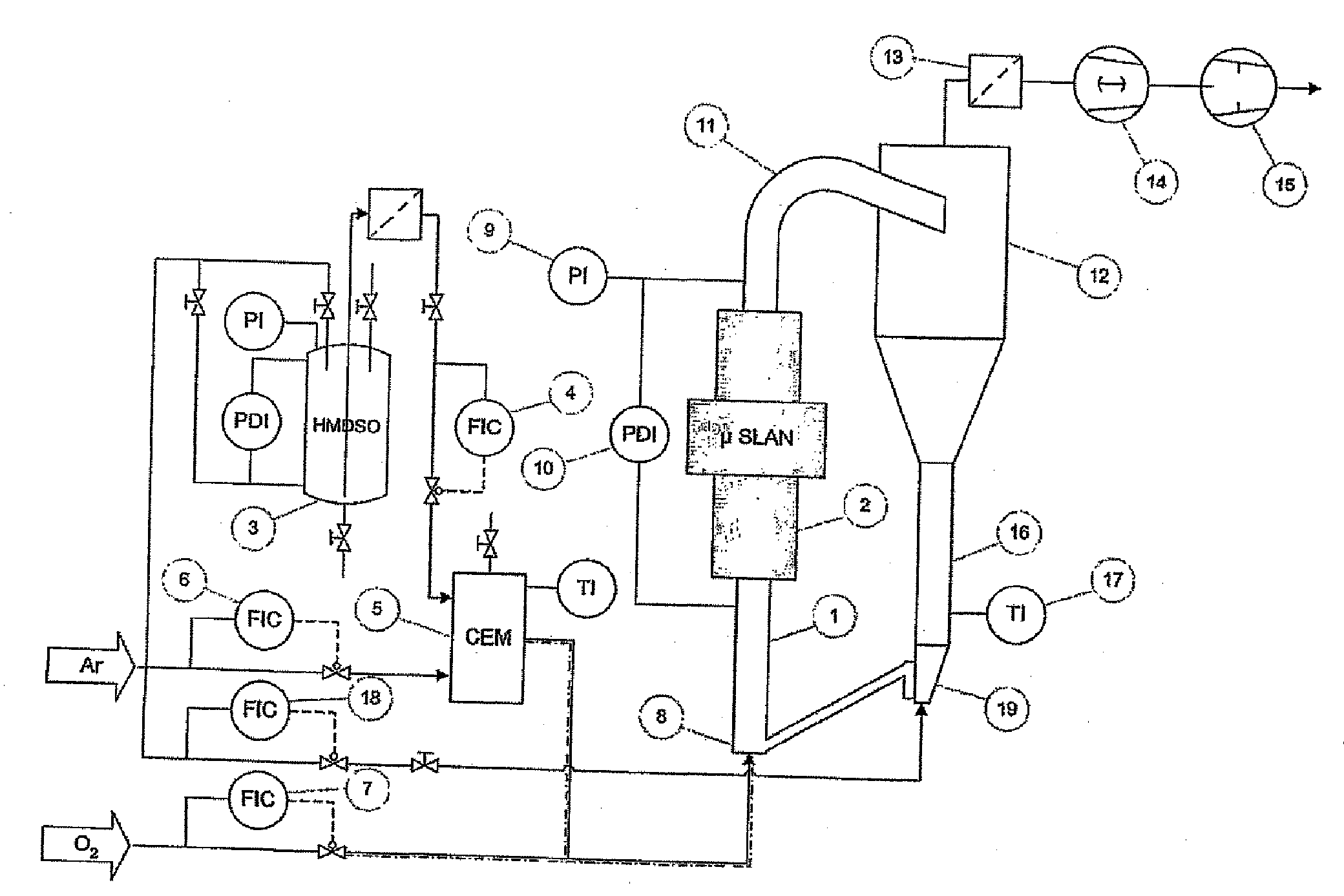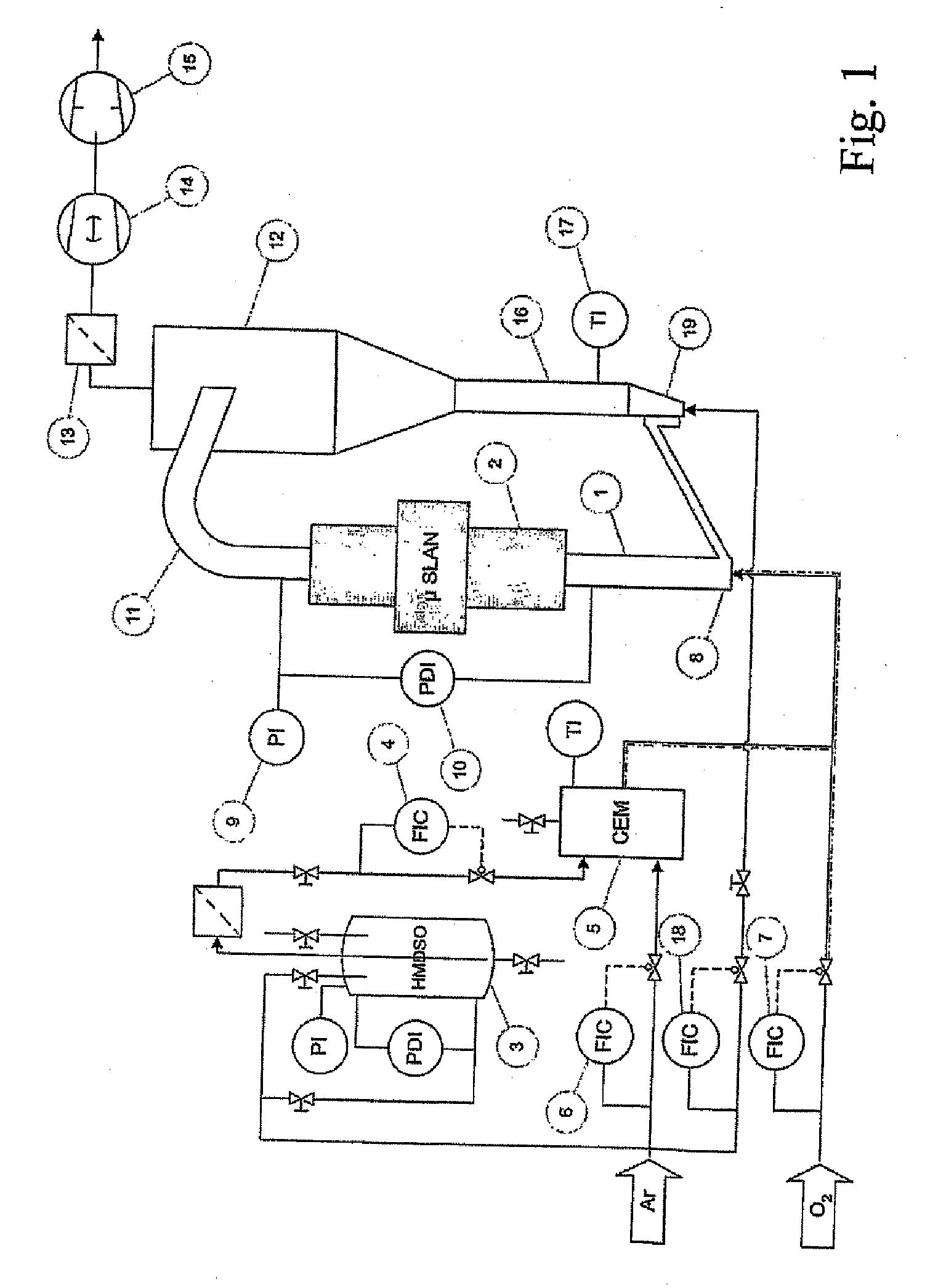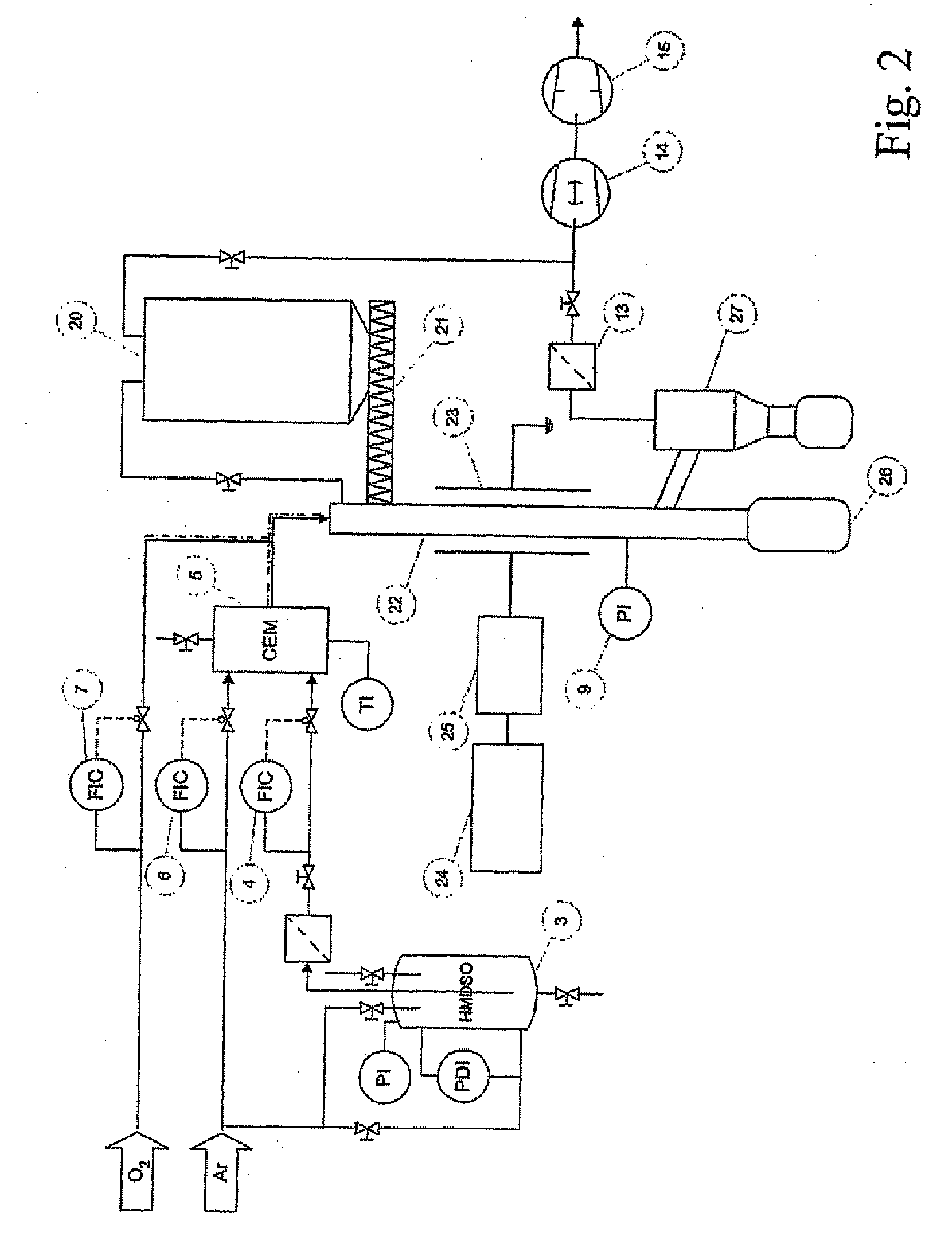Method for Attaching Manoparticles to Substrate Particles
a technology of nanoparticles and substrate particles, applied in the directions of transportation and packaging, natural mineral layered products, cellulosic plastic layered products, etc., can solve the problems of unplanned deposits and blockages in apparatuses and installations
- Summary
- Abstract
- Description
- Claims
- Application Information
AI Technical Summary
Benefits of technology
Problems solved by technology
Method used
Image
Examples
application example 1
[0076]A model substance (a-D-lactose monohydrate, d50=5.5 μm) is intended to be used to show how the flow properties of solids can be significantly improved using the present process.
[0077]The particles are treated in the above-described drop tube reactor.
[0078]The sequence of the treatment process can be described as follows:[0079]Once the storage container is filled with the untreated lactose particles, the reactor is sealed in a vacuum-tight manner and the vacuum pumps are switched on. The recipient is evacuated up to an absolute pressure of 0.05 mbar.[0080]The mass flow regulators are adjusted such that 50 sccm of argon and 1030 sccm (standard cubic centimeters per minute) of oxygen flow into the reactor. A process pressure of 2 mbar is set, which is kept constant for the further course of the test.[0081]The RF generator (forward power 100 W) is switched on and the capacities of the matching network are set such that the reflected power is 90 W is produced. The plasma ignites.[0...
application example 2
[0090]A parameter study is used to show to what extent the monomer flow rate affects the flow properties of the model substance (α-D-lactose monohydrate, d50=5.5 μm). The design of the reactor and the sequence of the treatment process are identical to those from the application example 1, except that the process gas composition is varied.[0091]In order to be able to ensure a constant oxygen to HMDSO ratio of 10, the oxygen flow rate (170-1030 sccm) is correspondingly matched to the monomer flow rate (17-103 sccm).[0092]In order that the residence time in the plasma zone remains constant for all parameter settings, the speed of the process gas in the drop tube must be kept constant. Accordingly, the oxygen / HMDSO mixture is supplemented by argon (50-995 sccm), so that a constant gas flow of 1083 sccm is established. At a process pressure of 2 mbar, this corresponds to a gas speed of approximately 8 m / s.
[0093]The flowabilities of the treated powders are measured using the method descri...
application example 3
[0094]Another parameter study is used to show to what extent the RF power affects the flow properties of the model substance (α-D-lactose monohydrate, d50=5.5 m). The design of the reactor and the sequence of the treatment process are identical to those from the application example 1, except that the forward power of the RF generator is varied.[0095]For this parameter study, the RF forward powers of 50 W, 100 W and 200 W are set. The capacities of the matching network are adjusted such that the reflected power is 40 W, >90 W and >190 W.
[0096]The flowabilities of the treated powders are measured using the method described in application example 1. FIG. 5 shows that the flowability increases as the RF power increases. The higher power results in greater fragmentation of the monomer and thus to an increased separation rate. The values illustrated in FIG. 5 relate to the forward power of the RF generator.
PUM
| Property | Measurement | Unit |
|---|---|---|
| Temperature | aaaaa | aaaaa |
| Fraction | aaaaa | aaaaa |
| Fraction | aaaaa | aaaaa |
Abstract
Description
Claims
Application Information
 Login to View More
Login to View More - R&D
- Intellectual Property
- Life Sciences
- Materials
- Tech Scout
- Unparalleled Data Quality
- Higher Quality Content
- 60% Fewer Hallucinations
Browse by: Latest US Patents, China's latest patents, Technical Efficacy Thesaurus, Application Domain, Technology Topic, Popular Technical Reports.
© 2025 PatSnap. All rights reserved.Legal|Privacy policy|Modern Slavery Act Transparency Statement|Sitemap|About US| Contact US: help@patsnap.com



